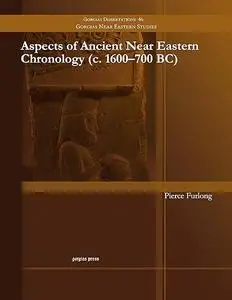Pierce Furlong, "Aspects of Ancient Near Eastern Chronology c. 1600 700 BC (Gorgias Dissertations)"
English | 2010 | ISBN: 1607241277 | PDF | pages: 287 | 8.7 mb
English | 2010 | ISBN: 1607241277 | PDF | pages: 287 | 8.7 mb
There can be no more important topic in historical studies than chronology, for it is chronology which gives meaning to history by placing individuals, events and material remains within their true sequence. If this sequence does not match historical actuality, then the historical narrative drawn from the available evidence may appear confused, incomplete or even contradictory.
The history of the Near East is bound together by an accurate and continuous absolute chronology that stretches back to the early first millennium BC. However, beyond that point in time one is forced to rely upon regional chronologies for the histories of the Great Kingdoms of Egypt, Babylonia, Assyria and Hatti, amongst others. Scholars have pieced together these regional chronologies over the last one-two centuries using information from King-lists, royal annals and administrative documents, as well as scientific dating techniques including astronomy and radiocarbon dating. The end result of this major enterprise is, today, what can best be described as an extremely complex but little understood jigsaw puzzle composed of a multiplicity of loosely connected data.
This work investigates the chronology of the Near East during the Late Bronze and Early Iron Age periods and concludes that the conventional/orthodox chronology is fundamentally wrong. Indeed, it argues that Egyptian New Kingdom (Memphite) dates should be lowered by 200 years to match historical actuality. This chronological adjustment is achieved in two stages: first, the removal of 85 (parallel) years of Assyrian chronology from the 11th-10th century BC pre-Neo-Assyrian period; and second, the downward displacement of Late Bronze Age Egyptian dates relative to Assyrian chronology by a further 115 years.



